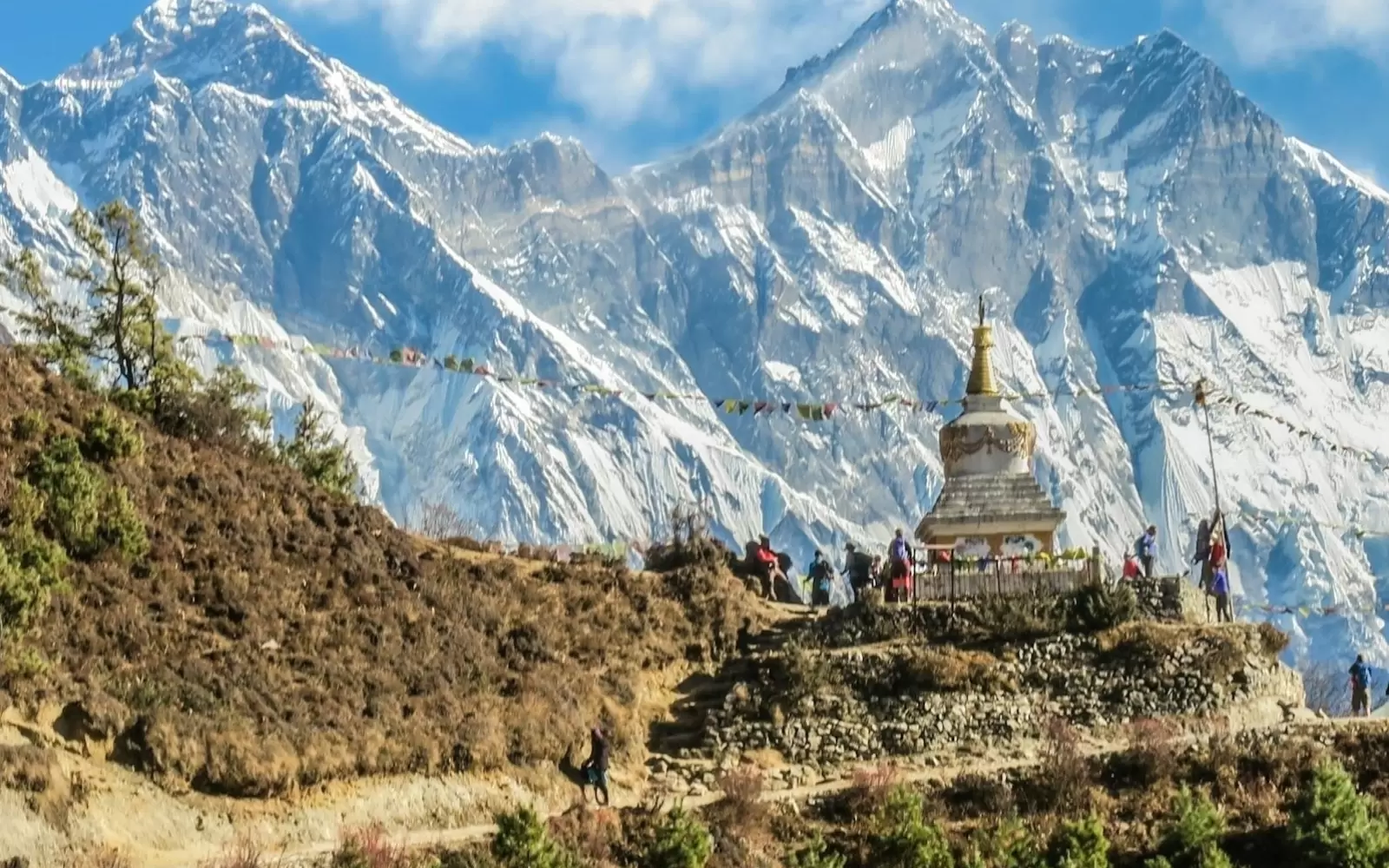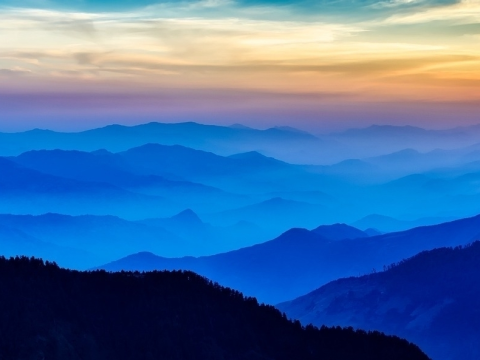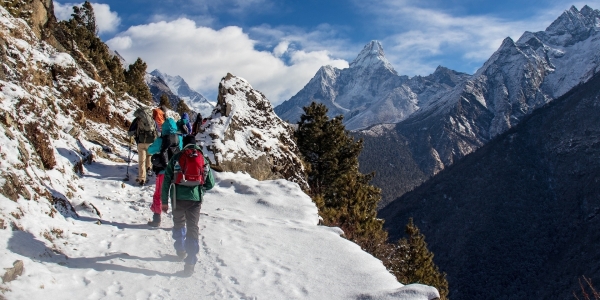Top 10 Trekking in Nepal
Nepal is a trekker's paradise, with its majestic mountain ranges, diverse landscapes, and rich cultu...

In this guide, we provide a comprehensive overview of these top 12 trekking routes, including expert tips for preparation, the best times to trek, safety considerations, and insights into local accommodations and food. Whether you're a seasoned trekker or a beginner, this guide will help you make the most of your adventure in Nepal.
Trekking in Nepal is a transcendent experience that merges adventure with spirituality, offering an unparalleled opportunity to immerse yourself in the majestic landscapes of the Himalayas. With its vast array of trekking routes, each showcasing a unique facet of Nepal's natural beauty and cultural heritage, Nepal is truly a trekker’s paradise. As you embark on these trails, you'll traverse through ancient forests, cross vibrant high-altitude pastures, and be awestruck by towering snow-capped peaks, all while discovering the heart of Nepali culture. This guide is designed to help you navigate the best trekking adventures for the 2024-2025 seasons, offering expert tips, route recommendations, and essential travel insights.
Nepal stands out as a premier trekking destination for several compelling reasons. The country’s diverse topography ranges from lush lowland forests to the towering peaks of the Himalayas, creating an extensive network of trekking routes that cater to all levels of adventurers. Nepal is home to eight of the world’s fourteen highest peaks, including Mount Everest, which alone draws trekkers from around the globe. Beyond the stunning landscapes, the opportunity to experience the rich cultural tapestry of the Nepalese people, including their traditions, festivals, and hospitality, makes trekking here a profoundly enriching experience. Whether you're seeking challenging high-altitude treks or scenic walks through picturesque valleys, Nepal offers a trek for every adventurer.
Trekking in Nepal is deeply intertwined with the country’s cultural and spiritual fabric. Traditionally, trekking routes were used by local communities for trade and pilgrimage. Today, they serve as a means for travelers to connect with the natural world and local cultures. The trekking culture is characterized by a sense of camaraderie among trekkers, guided by local Sherpas and porters who share their profound knowledge of the mountains and their heritage. Trekking also often involves staying in teahouses or lodges run by local families, which not only provides essential rest and sustenance but also offers a window into the daily lives of those living in the Himalayas.
12 Popular Trekking Routes You Can't Go Wrong With
If you’re looking to explore the best trekking routes in Nepal, consider these 12 popular destinations. Each route offers a unique experience, from the iconic Everest Base Camp Trek to the serene beauty of the Mardi Himal Trek. Here’s a brief overview of what to expect from these routes:
This iconic trek takes you to the foot of the world’s highest peak, offering breathtaking views of Mount Everest and the surrounding peaks, while also allowing you to experience the rich Sherpa culture.
A favorite among trekkers, this route offers stunning views of the Annapurna massif and a chance to walk through diverse landscapes, from lush forests to alpine meadows.
A shorter trek that offers panoramic views of the Annapurna and Dhaulagiri ranges. The sunrise view from Poon Hill is particularly spectacular.
This trek provides a beautiful contrast of verdant valleys and high mountain landscapes, with cultural insights into the Tibetan-influenced Tamang communities.
This classic circuit trek takes you through a variety of landscapes, from subtropical forests to arid high-altitude deserts, and includes a dramatic crossing of the Thorong La Pass.
A less crowded alternative to the Annapurna Circuit, the Manaslu trek offers spectacular views of Mount Manaslu and a chance to experience the unique culture of the Nupri Valley.
An alternative to the Everest Base Camp trek, it features stunning views of Everest and the surrounding peaks from the Gokyo Ri viewpoint.
This restricted area trek takes you to the ancient kingdom of Mustang, known for its unique Tibetan culture and dramatic desert landscapes.
A relatively new addition to Nepal’s trekking routes, the Mardi Himal trek offers breathtaking views of the Annapurna range and a serene trekking experience.
For those short on time but eager to experience the Everest region, the Everest Short Trek offers a condensed version of the classic trek with stunning views of Everest.
Chisapani Nagarkot Short Trek:
A popular choice for those looking for a shorter trek, this route provides panoramic views of the Himalayas and a glimpse of rural Nepali life.
Everest Trek Return by Helicopter:
For a luxury twist, this trek includes a helicopter return from Everest Base Camp, offering an aerial view of the majestic Himalayas.
Expert Tips, Best Routes, and Essential Travel Packages
When planning your trek, consider factors such as route difficulty, altitude, and duration. Expert tips include choosing the right season, packing appropriately, and understanding the local culture. Essential travel packages often include guided tours, porters, and logistical support to enhance your trekking experience.
Understanding Nepal’s weather patterns is crucial for a successful trek. The best trekking seasons are generally pre-monsoon (March to May) and post-monsoon (September to November). The monsoon season (June to August) can bring heavy rains and affect trail conditions. Weather conditions vary significantly with altitude, so be prepared for cold temperatures at higher elevations and warmer conditions at lower altitudes.
Overview of the Best Time to Trek in Nepal
The best time to trek in Nepal is during the pre-monsoon (spring) and post-monsoon (autumn) seasons. Spring (March to May) offers clear skies, moderate temperatures, and blooming rhododendrons, while autumn (September to November) provides crisp air, excellent visibility, and stable weather conditions.
Understanding the Monsoon Season and Its Impact on Treks
The monsoon season (June to August) brings heavy rains, which can lead to landslides, trail erosion, and limited visibility. While some lower-altitude treks can be manageable, most high-altitude routes are best avoided during this period due to adverse weather conditions.
Weather Conditions in Different Regions and Altitude Effects
Weather conditions vary significantly by region and altitude. In the lower altitudes, temperatures are generally mild, but as you ascend, temperatures drop, especially at higher elevations where they can plummet below freezing. Altitude can also affect weather patterns, with higher regions experiencing more extreme weather conditions.
Safety is paramount during high-altitude treks. Acclimatization techniques, such as gradual ascent and hydration, are essential to prevent altitude sickness. Familiarize yourself with first aid and emergency procedures. Proper preparation and awareness of potential risks are key to a safe trekking experience.
Acclimatization Techniques for High-Altitude Treks
Acclimatization is crucial for high-altitude treks to prevent altitude sickness. Gradual ascent, proper hydration, and taking rest days to acclimate are key techniques. It’s essential to follow a recommended itinerary that includes acclimatization days.
First Aid and Emergency Procedures on the Trail
Being prepared for emergencies is vital. Carry a well-stocked first aid kit and familiarize yourself with basic first aid procedures. In case of serious health issues or emergencies, evacuation procedures should be understood, including how to contact emergency services.
Safety Precautions to Prevent Altitude Sickness and Other Risks
Preventing altitude sickness involves ascending slowly, staying hydrated, and recognizing early symptoms. It’s also important to be aware of other risks, such as weather-related hazards and physical injuries, and take appropriate precautions.
Trekking routes in Nepal typically offer a range of accommodation options, from basic tea houses to more comfortable lodges. Tea houses are small guesthouses providing essential amenities, while lodges may offer more comfort. Understanding what to expect in terms of facilities can help you prepare better for your trek.
Tea Houses and Lodges: What to Expect
Accommodation along most trekking routes is provided by tea houses or lodges. These offer basic amenities including beds, blankets, and communal dining areas. While comfortable, they can vary in quality, so it’s important to manage expectations and be prepared for simple living conditions.
Food and Hydration on Nepal Trekking Routes
Traditional Nepali cuisine, such as dal bhat (lentil soup with rice), is commonly served along trekking routes. Ensuring safe drinking water is crucial, and many trekkers use purification tablets or filters. Special dietary requirements, including vegetarian and vegan options, are generally accommodated but should be communicated in advance.
Traditional Nepali Cuisine and Popular Food on the Trails
Nepali cuisine is hearty and varied, with staple dishes including dal bhat (lentil soup with rice), momos (dumplings), and thukpa (noodle soup). These meals are often available at tea houses along the trek.
Ensuring Safe Drinking Water During Treks
Safe drinking water is crucial. While many tea houses provide boiled water, it’s wise to carry purification tablets or a water filter to ensure the safety of your drinking water.
Special Dietary Requirements and Vegetarian/Vegan Options
Vegetarian and vegan options are generally available on most trekking routes, though choices may be limited. Informing your guide or tea house in advance about any special dietary needs can help ensure suitable options are provided.
If you’re new to trekking, preparation is key. Proper packing, understanding permits and regulations, and physical training are essential steps. Guides and porters can enhance your experience by providing local expertise and support. Respecting nature and following the “Leave No Trace” principles are important for preserving the environment.
Preparation and Packing
Proper preparation is key for a successful trek. Pack essential gear, including sturdy trekking boots, warm clothing, and a good quality sleeping bag. Consider the specific requirements of your chosen trek and adjust your packing list accordingly.
Permits and Regulations
Many trekking routes in Nepal require permits, which vary by region. Ensure you obtain the necessary permits well in advance and be aware of any regulations that apply to your trek.
Training and Fitness
Physical fitness plays a significant role in trekking. Engage in regular cardiovascular and strength training exercises in the months leading up to your trek to build endurance and strength.
Guides and Porters: Your Local Companions
Hiring a guide and porter can enhance your trekking experience by providing local knowledge, ensuring safety, and carrying your gear. Choose reputable companies and ensure clear communication about expectations and services.
Challenges and How to Overcome Them
Trekking in Nepal presents challenges such as varying weather conditions, physical exertion, and altitude. Preparing for these challenges involves physical conditioning, proper gear, and mental readiness. Engaging with experienced guides and local porters can help navigate these challenges effectively.
Respecting Nature: Leave No Trace
Respecting the environment is a fundamental aspect of trekking. Adhering to the “Leave No Trace” principles helps protect Nepal’s natural beauty. This includes packing out all trash, minimizing campfire use, and staying on designated trails.
Nepal offers a myriad of trekking experiences, each with its unique appeal and challenges. By following this ultimate guide, you can choose the right trek, prepare adequately, and fully enjoy the stunning landscapes and rich cultural encounters that Nepal has to offer in 2024-2025. Whether you seek the thrill of high-altitude adventures or the serenity of less-traveled paths, Nepal’s trekking routes promise an unforgettable journey.

Nepal is a trekker's paradise, with its majestic mountain ranges, diverse landscapes, and rich cultu...

Nepal, nestled in the lap of the Himalayas, is a paradise for trekkers and adventure enthusiasts. Wi...

Nepal, often referred to as the "Roof of the World," is a small yet diverse country nestled in the H...
